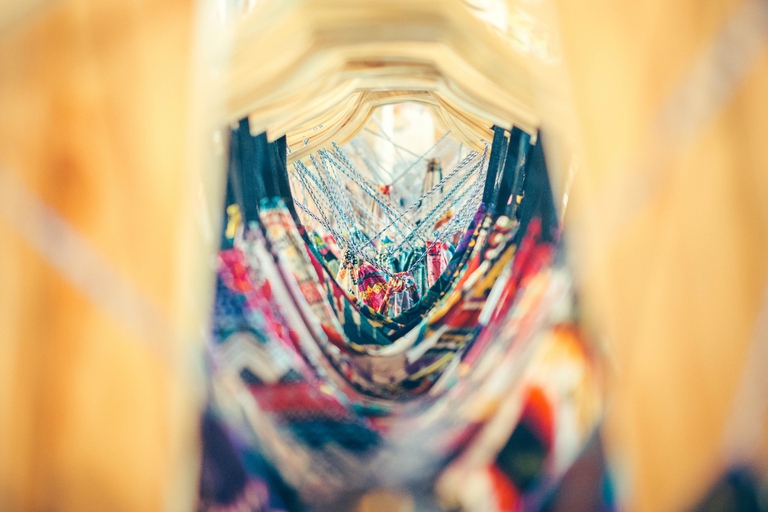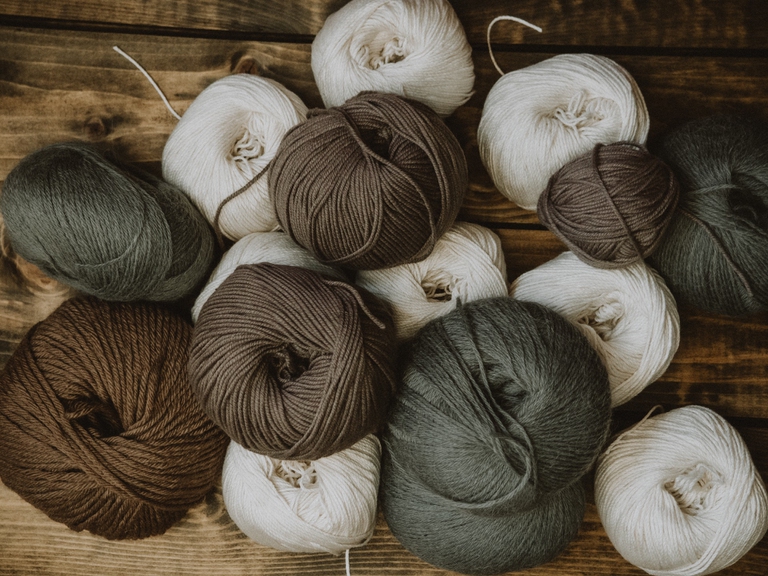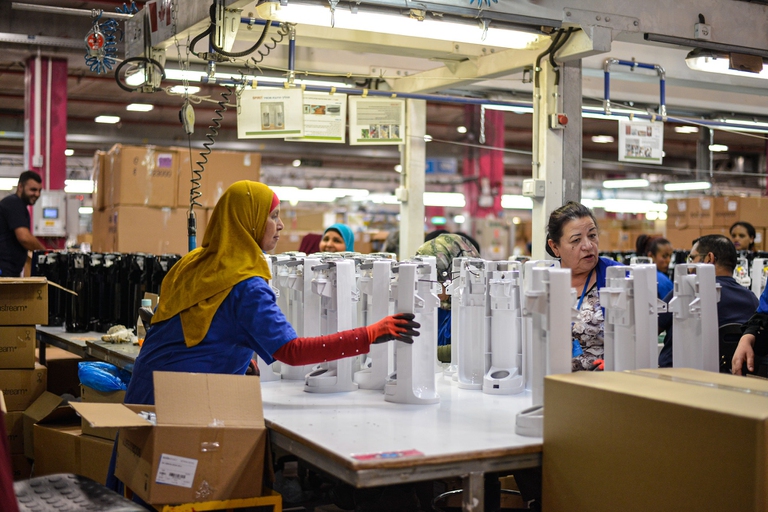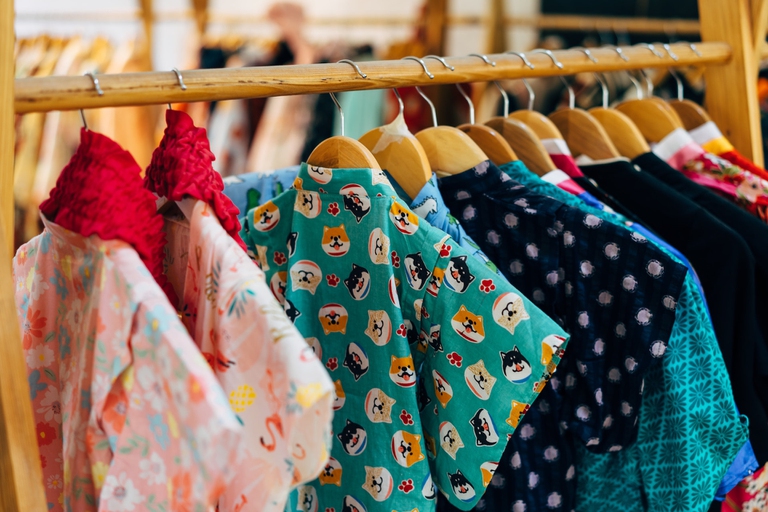https://www.lifegate.it/dieci-cose-a-proposito-di-moda-sostenibile
- |
If there is a term that is particularly abused today, it is that of sustainable fashion:As awareness grows about the serious environmental impact our clothes have on the planet – the textile industry is responsible for 10 percent of global greenhouse gas emissions every year: 654 kilos of CO2 equivalent are produced per person in the European Union alone - the definitions that praise "green" products are also growing.

Sustainable fashion, the minimum requirements
Cutting CO2 emissions, fight against overproduction, reduction of pollution and waste, support for biodiversity and guarantee of the conditions in which textile workers work (do they receive a fair wage?Are the working conditions safe?) are i fundamental criteria to be verified so that we can talk about the sustainability of a product.
Considering how many factors affect the sustainability or otherwise of a product, there are still too many few brands which, to date, they manage to satisfy all or almost all of them.We have talked about several times greenwashing:purchasing products simply because they are defined as sustainable by those who produce them is not enough.To make choices in line with the protection of the environment and workers we must rethink our purchasing habits regarding textiles from the ground up.Many crucial precautions may seem trivial, but the truth is that they are not and, above all, they are adopted by a part of people that is still too minority.Here you are ten things to keep in mind when purchasing clothing or accessories.
- Buy less, buy better
- Know the materials
- Avoid polyester
- Check the composition of the garments
- Choose alternative materials to leather
- Ask yourself who produced that item
- Take care of your clothes
- Use washing machine filters
- Investing in vintage and second hand
- Rent
Buy less, buy better
According to a report published in 2021 by European Parliament, in the old continent they are bought every year on average almost 26 kilos of textile products per person:compared to the nineties, each of us shops for 40 percent more.An enormity if you then think about how much we actually wear everything we buy.All this buying frenzy has as a direct consequence the overproduction:a reports spread by McKinsey Sustainability already in 2016 he estimated that clothing production had hit the ceiling 100 billion produced every year.It is an objective fact that all these clothes are of no use to us.Not all together, at least.When faced with a new T-shirt, a new sweater or a pair of shoes, it is appropriate to ask yourself:do I really need it?How many times will I wear it?Do I already have something similar in my closet?
Know the materials
Knowing the environmental impact of materials is essential when it comes to making more sustainable purchases.A good rule is to invest in fabrics produced from natural or bio-based fibres:this is both because their weight in terms of emissions is lower than synthetic ones, and because they are more easily recyclable.
Materials like wool, However, silk and cotton are not all the same, which is why it is important to know the different ones certifications:organic or recycled cotton - Ocs (Organic content standard), Gots (Global organic textile standard), Grs (Global recycled standard) - uses less water and fewer chemicals than the more common one, so virgin or regenerated wool and silk non-violent.

Avoid polyester
Non-recycled polyester, on the other hand, being a petroleum derivative, not only is it very impactful in terms of emissions needed to produce it, but it is also very difficult to dispose of.Synthetic fibers take biblical times to degrade and clothing made with a high percentage of polyester releases microplastics with every wash.As of today, approximately 60 percent of clothing produced globally is made entirely or partially from synthetic fibers derived from petrolatum:a good habit is to always check the presence or absence of these fibers in garments that appear to be 100 percent cotton or 100 percent wool.Thanks to its many qualities, polyester is widely used in technical clothing:However, you can focus on brands that employ them Econyl recycled:a fiber produced by Acquafil starting from disused fishing nets.
Pay attention to the composition
Knowing how to read the label is no small feat if you intend to make green purchases.First of all, you need to check whether a boss is composed entirely of the same material, therefore it is 100 percent wool, è 100 percent cotton and so on:if so, it is more easily recyclable.If, on the other hand, it is made up of several different fibres, energy will have to be expended for it to have a new life.Processing also affects:the more a garment is colored or printed and the more impactful its production process will have been.Does it contain lurex or plastic inserts?It will be harder to recycle, and so on.
Bio-based imitation leather
Today there are many eco-friendly alternatives to leather, but they are not all the same.Those that contain polyester, in fact, are not an option that can be defined as sustainable.Research and development in recent years have made incredible progress and some fabrics faithfully recreate the feeling of real leather Orange Fibre, the leather obtained from orange peel; Pinatex, from the peels of pineapple And Mylo, from the mushroom root or mycelium.

Who produced what we are buying?
A crucial component, when talking about sustainability, concerns the treatment of textile workers: Has whoever made the garment or accessory we are buying been paid enough? Do you work in safe conditions?The pandemic gives COVID-19 it has put textile producers in great difficulty who, in many cases, have passed the problem on to their workers.An ethical choice is to favor brands that openly disclose information both on their factories and on their policies regarding wages and working conditions.

Take care of your clothes
The way we treat clothing not only determines how long it lasts, but also has an impact on the environment. Wash at low temperatures allows you to keep garments in optimal conditions for longer;avoid using the dryer, in addition to saving energy, avoids the further dispersion of microplastics into the environment.A further step after washing then causes greater wear of the clothes which will therefore have a shorter life. Washing too often is harmful both for the garments and for the environment:the jeans, for example, shouldn't really be washed, but there are tricks for cleaning them.Also in this case it is crucial to pay close attention to the label to take care of clothing and accessories in the right way.Extending the life of our clothes is crucial to reducing emissions and avoiding waste.
Use washing machine filters
Avoid it entirely non-recycled polyester nowadays it is almost impossible, but to avoid a massive dispersion of microplastics with each wash it is useful to invest in washing machine bags built specifically for capture synthetic particles during washes.The most popular is Guppyfriend.Invented by some German surfers, it has a dual function:on the one hand it retains microplastics with a diameter greater than 15 μm, and on the other it protects clothing during washing.
Investing in vintage and second hand
Buying vintage clothes has its charm:or because you have it the possibility of telling something about past eras, and then why doing so a new product is not put into circulation.Not everyone likes the retro aesthetic:here's what retailers like Vestiaire Collective And Depop offer products second hand contemporary and also a wide selection of luxury brands.

Rent
When you have a special occasion – a ceremony or an important work event where there is a dress code to be respected –, the simplest and most immediate solution is to go and buy something new specifically.Buying clothes and accessories for a specific moment, however, implies the risk that these are not worn so frequently.Is it really worth it?This is a question to ask both from a savings perspective and from an environmental protection perspective.Nowadays there are various options, including for example that of rental:sites like Drexcode or Dress you can they offer a wide selection of both brands and moods.
